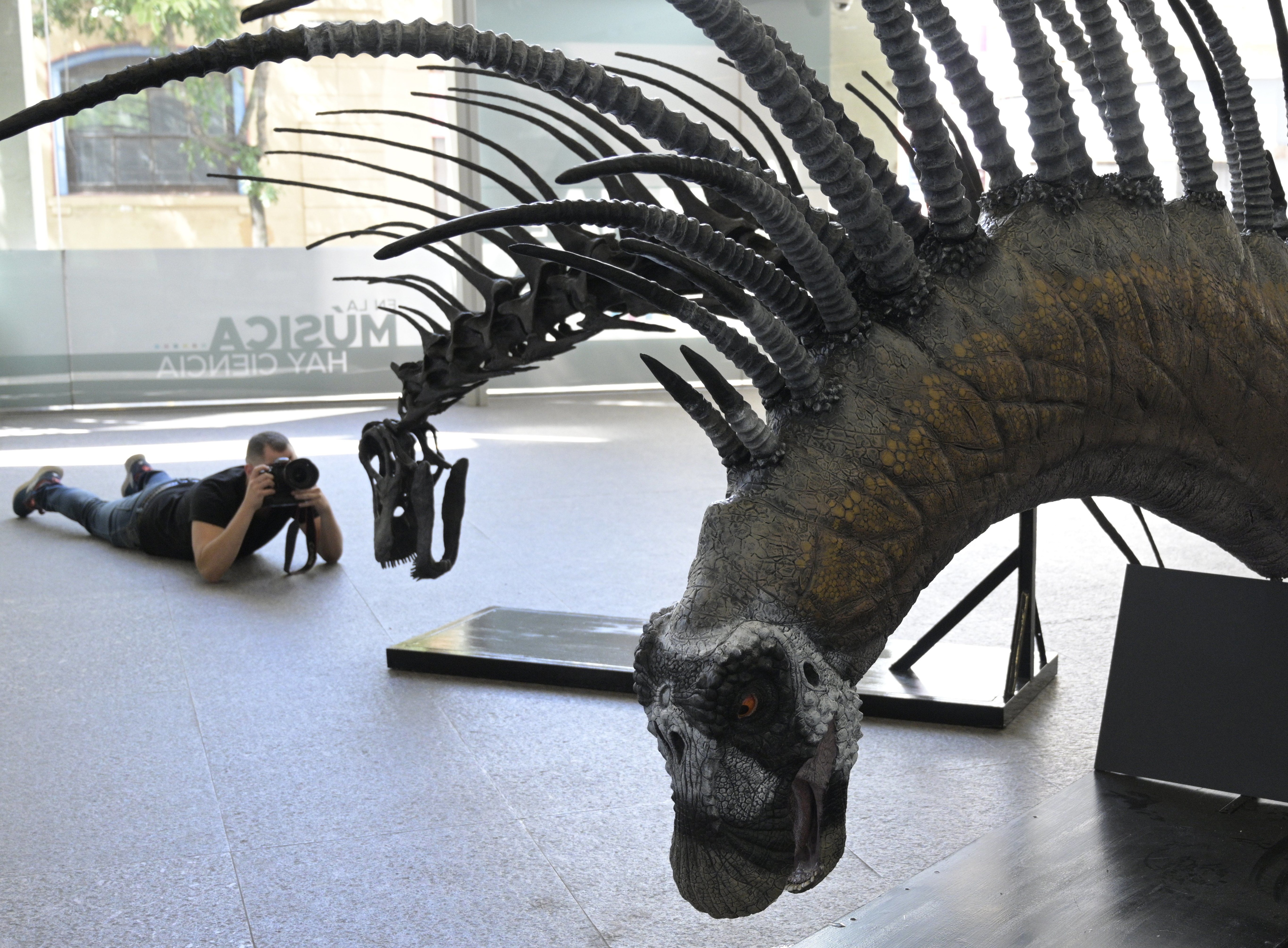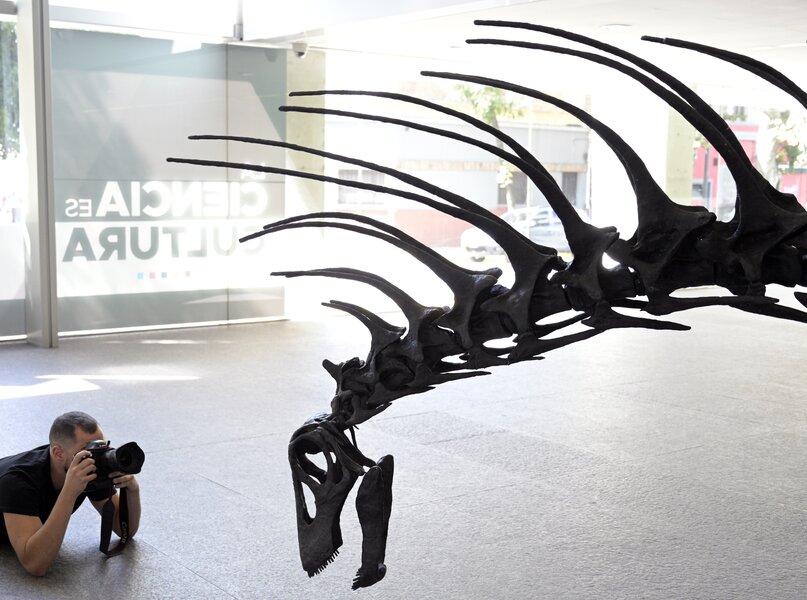Create a free profile to get unlimited access to exclusive videos, sweepstakes, and more!
Sonic the Hedgehog meets Jurassic Park in this wild, newly-discovered dinosaur

Just when you think you saw every possible exaggerated dinosaur in Jurassic World: Fallen Kingdom, paleontologists have unearthed one that only looks like Dr. Henry Wu genetically engineered it.
Bajadasaurus pronuspinax (yes, that does kind of sound like badass-a-saurus) is a new species that appears to have some of Sonic the Hedgehog’s genetic makeup spliced into its reptilian DNA (plus a bit of those No Man's Sky creatures to boot). Found in the Bajada Colorada Formation in Northern Patagonia, Argentina, this creature is thought to have lived 140 million years ago, during the Lower Cretaceous. The star of a new study published in Scientific Reports gets the first half of its name from where its skeleton was found. Pronuspinax is a testament to its unusual forward-bending spine.
Sauropods like Bajadasaurus ruled the Earth for eons. It was a dicraeosaurid, belonging to a subgroup of medium sauropod species with distinct vertebrae and long spines down their necks and backs that gave them the appearance of prehistoric punk rockers. If Sid Vicious had a dinosaur form, this would be it.
Because skeletons are the only way something that has been dead for over a hundred million years can actually speak, scientists analyzed the skull of the Bajadasaurus for evidence of how it lived. However fierce it looked, this giant lizard was an herbivore that preferred low-lying plants, though its eyes were strategically placed close to the top of its skull so it could always be on alert for any predators creeping up.
While Bajadasaurus isn’t the first spiked dinosaur ever discovered, it certainly is the weirdest. Amargasaurus cazaui could have also passed for a prehistoric cousin of Sonic’s, but it wasn’t nearly as flashy. Amargasaurus’ shorter backward-leaning neural spines were not nearly as eye-opening to scientists as Bajadasaurus’ much larger — as in 5 feet — forward-leaning spikes.
“These must have been display structures,” paleontologist Steve Brusatte told Gizmodo regarding the spikes that were obviously hard to miss, “to attract mates or intimidate rivals, or maybe to rock out in other ways that only the dinosaurs would have known.”
What exactly the spikes were used for is still lost somewhere in the Cretaceous Era. Researchers speculate that they could have regulated body heat, stored fat in the spaces between them, somehow defended against predators (possibly making them reluctant to gnaw), or gone all out as an overkill mating display.
So far, the anti-predator hypothesis seems most probable to scientists, especially if the spines had a keratin sheath, but how they would hold up if a giant carnivore actually did fall on them is questionable. The long spines could have been too thin to inadvertently stab anything lunging toward the Bajadasaurus in pursuit of an easy meal. They may have also been encased in soft tissue or used to support a Spinosaurus-like frill. Something more concrete could be hypothesized if there were comparable animals still around.
“The trouble with such unique features in extinct animals is that there are rare, if any, living examples to compare to better understand potential functions,” postdoctoral research scientist Eric Gorsack explained. “But at the very least, Bajadasaurus demonstrates that life will find a way.”
(via Gizmodo)















